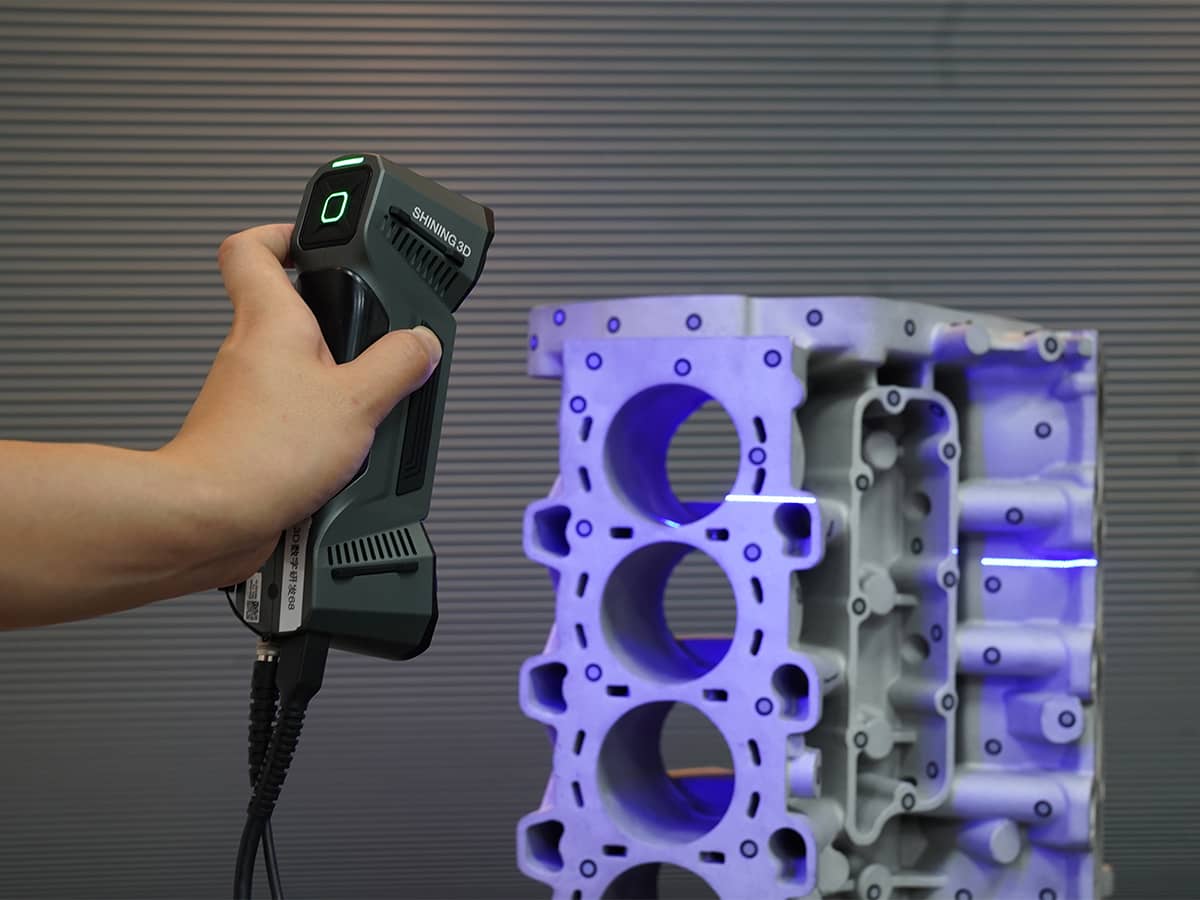3D skenerji
- Ročni ali stacionarni 3D skenerji,
- Namizni in visoko natančni metrološki 3D skenerji,
- Najnovejši 3D skenerji na tržišcu z izjemnim “price-performance” razmerjem,
- Profesionalne in dostopne rešitve za digitalizacijo.
VEČ O 3D SKENERJIH
Medicina
Dental
Potrošniški produkti
izobraževanje

Namen uporabe 3D skenerjev
- Vzvratni inženiring
- 3D meritve
- Kontrola kakovosti
- Prilagajanje izdelkov
- Razvoj izdelka
- Računalniška grafika
- VR & AR
- Simulacije
FAQ - 3D SKENERJI IN 3D SKENIRANJE

Na trgu obstaja več vrst namiznih in metroloških 3D skenerjev, ki se razlikujejo glede na način zajemanja 3D podatkov. Nekatere od njih so:
- Laserski,
- Strukturirana svetloba,
- Fotogrametrija,
- Ročni,
- CMM
3D skeniranje ponuja aplikacije na številnih področjih, kot npr.:
- Vzvratni inženiring: načrtovanje in razvoj novih izdelkov ali spreminjanje obstoječih,
- Kontrola kakovosti v proizvodnji: nadzor kakovosti delov, kalupov ali orodij med proizvodnim procesom,
- Arhitektura in gradbeništvo: pomoč pri oblikovanju in načrtovanju novih struktur.
- Umetnost in kultura: ustvarjanje digitalnih replik umetniških del in artefaktov, kar omogoča njihovo ohranitev in podrobno preučevanje brez tveganja poškodbe izvirnikov,
- Medicina in zobozdravstvo: izdelava modelov, protez in vsadkov, ki so specifični za pacienta,
- Zabava in mediji: ustvarjanje 3D modelov likov in predmetov za uporabo v filmih, video igrah in drugih oblikah medijev.
Več o uporabnosti 3D skeniranja si lahko preberete tukaj.
Na čas, potreben za 3D skeniranje objekta, vpliva več dejavnikov:
- Velikost objekta,
- Kompleksnost predmeta,
- Vrsta 3D skenerja,
- Zahteve po zajemu detajlov.
Majhen in preprost predmet lahko zajamete v nekaj minutah, 3D skeniranje večjega in bolj kompleksnega objekta pa lahko traja več ur.
Seveda, pri nas ponujamo tudi najem 3D skenerja. Na voljo imamo veliko različnih 3D skenerjev za različne potrebe, zato boste zagotovo našli pravega. Mnogi se nad 3D skeniranjem zaradi vseh prednosti zelo navdušijo in kasneje implementirajo to obliko 3D tehnologije v svoj posel.
3D skenerji imajo več skupnih lastnosti s fotoaparati. Fotoaparati zbirajo informacije o barvah, 3D skenerji pa informacije o razdalji. Slika, ki jo projecira 3D skener, tako določa 3D položaj vsake točke.
Natančnost naših 3D skenerjev sega kar do 0,005 mm, kar jih uvršča v sam vrh kakovosti. Ponavadi zahteve po natančnosti niso tako visoke, kar pohitri celoten proces 3D skeniranja.
3D skeniranje je proces digitalnega zajema objekta. Rezultat 3D skeniranja je CAD model. Gre za eno izmed najhitreje rastočih 3D tehnologij, s katero lahko povečate konkurenčnost na trgu. Podatke, pridobjene s 3D skenerjem, lahko uporabite za vzvratni inženiring ali kontrolo kakovosti.



